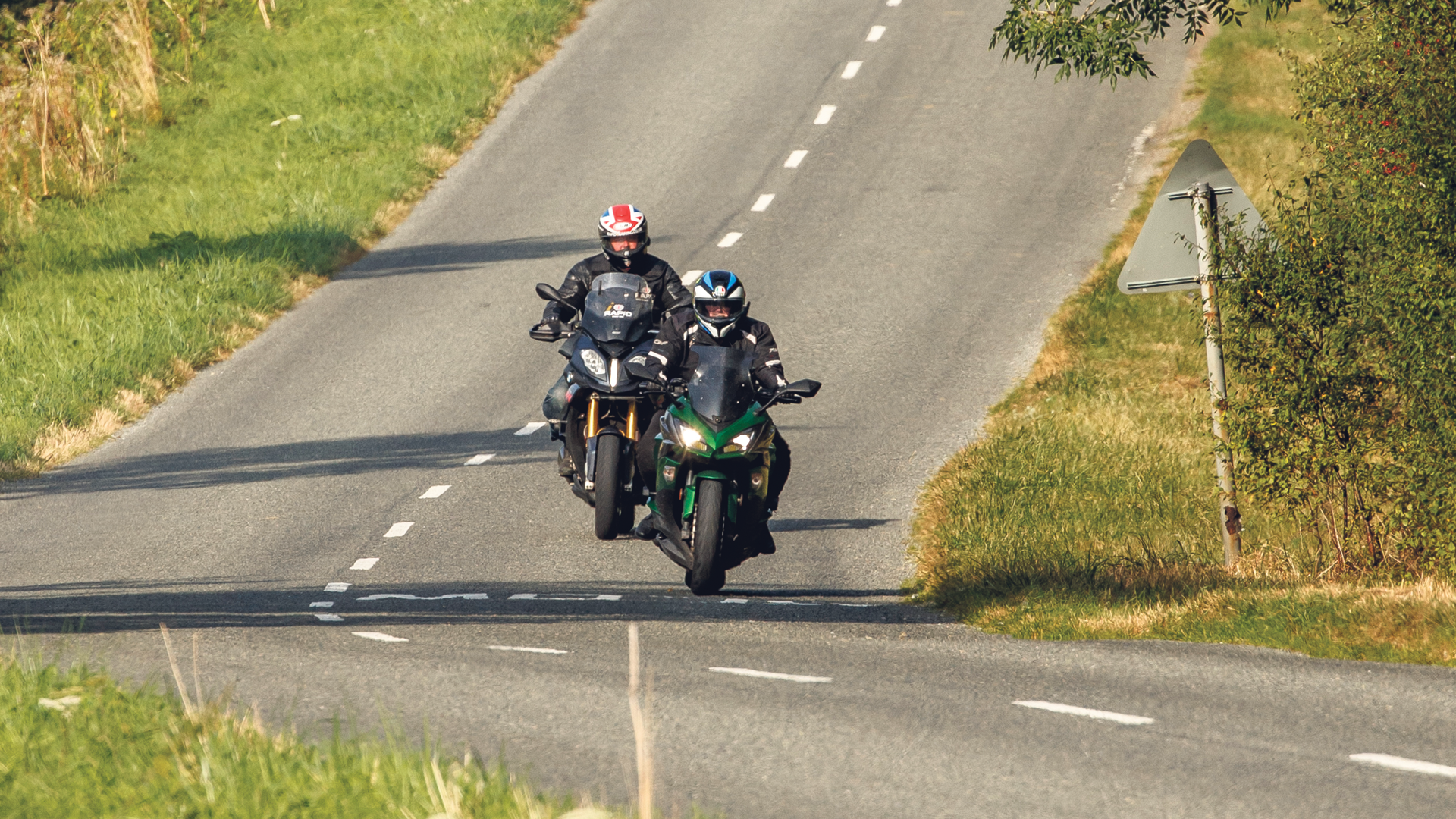
Reading the road
Learn to read the road like a book
Information overload is almost as bad as no information at all… Here’s how to process your ride
Getting overwhelmed by information during a ride is a symptom of not having a plan. Being in the right position on the road is fundamental. Many riders sit centrally in their lane most of the time, and also often allow traffic to block their view by sitting too close behind other vehicles. Move around in your lane, from side to side and forwards and back to constantly maximise your view, both ahead and behind.
When it comes to reading the road, you should think of it like studying a page in a book. Start at the very top of the page, the furthest point you can see on the horizon (the vanishing point), then work downwards, filling in more details from things like road signs and other available clues, before heading back up to the top.
Reading the road takes practice before it becomes second nature. Practising at a lower speed with the correct positioning will help your brain get in tune with absorbing all the information and formulating a plan. Talk yourself through what you can see, what you need to do to deal with it, and constantly ask yourself: ‘What’s next?’
Too many riders keep their head fixed when entering a turn. Think like a darts player. They don’t just turn their heads to look at the board at the very moment they throw the dart, and we shouldn’t just look for the exit at the point we’ve already turned the bike.
Think of your vision as being like a fly fisherman casting his line: Throw it out into the distance then back close; out and back, out and back all the time. It’ll feel strange at first but in time it will become second nature.
QUICK TIPS
Expand your view
The correct positioning will increase what you can see on the approach to a corner. Moving to the left of your lane nearer the kerb when approaching a right-hand bend, and to the right of your lane nearer the centre line when turning left, will boost your view of what’s ahead.
Know the signs
You don’t even need to see exactly what is displayed on an upcoming sign to get info from it. When you spot a sign in the distance, just seeing what shape it is will give you some clue that a hazard is approaching. Triangular signs are giving a warning and an inverted triangle sign is a give way – it’s the only inverted triangle sign.
Swivel
Want to see more? Look more! Physically turn your head on the approach to a corner to expand your field of vision. Looking through the corner also has the effect of helping you stay on line while you negotiate it, because you tend to go where you look.
Give us a clue
Gathering other details, such as the speed or behaviour of oncoming traffic around an approaching bend, as well as tree or hedge lines, can give you clues about what’s ahead. But these should only enhance your picture – don’t base decisions on this info.
Vanishing point
The point on the horizon at which the two sides of the road appear to converge can help you judge the severity of an oncoming corner and therefore set your speed into it, given that you should be able to stop within the distance that you can expect to remain clear.


